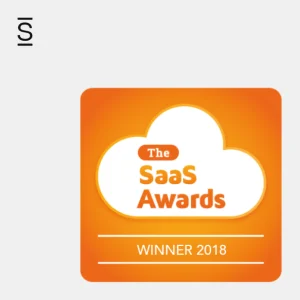Video is a fantastic format for communications, sharing knowledge, and training. It’s a powerful medium that:
- Can have more impact than print media, particularly for some types of messages
- Conveys the personality of individuals, for example senior leaders
- Is increasingly easy and cheap to produce
The ability to play and share videos should be a key capability of your social intranet.
Successful approaches to video
Although organizations approach video in different ways, many have found that on an intranet, videos work best when they:
- Are short and bite-sized
- Are focused on a specific purpose
- Are of professional quality, including good audio
- Can be commented on, rated, and shared by employees
Employees should also be able to find the videos they need. Videos should be organized by theme or channel, or appropriately tagged by subject so that they are easily findable by people with particular interests. You can use video for a number of different purposes. Here are eight key business uses that get the most out of the medium.
1. Leadership communications
Video is an excellent format for leadership communications. A more personal video message or blog can be a great way for employees to get to know senior managers and leaders better. Video can convey personality and create a connection that might be absent from formal written corporate communications.
A video can also command more employee attention for important messages. Announcements such as strategic changes or quarterly updates work particularly well in a video format.

0:55
2. Relay town halls or key meetings
‘Town halls’ are an important component of internal communications. Videoing a town hall and showing it on the intranet helps employees who may have missed out to catch up. Some companies are even webcasting to show events live and allow questions and comments via the social intranet.
A video of a restricted meeting intended for management can also establish transparency and engage employees. We know one company that videos all its board meetings and allows employees to view them on the intranet!
3. Welcoming new employees
Joining a company can be an intense experience with a mountain of information to take in and countless people to meet. Intranets make the onboarding experience less stressful and more welcoming.
Having a friendly welcome video message from a senior leader is a great way to quickly make new employees feel at home and to help them settle in.
4. Employee stories
Video works well for news items about employee activities, particularly when the story relates to a different location or an activity such as volunteering. This makes an employee’s actions feel more tangible.
It can also be engaging to feature stories presented by employees themselves, acting as ‘reporters.’ This demonstrates that the organization values the employee voice and that videos can be more than a vehicle for corporate messaging.
5. Training videos
Video is a key format for training and learning, whether it is creating instructional videos or recording live training sessions for future reference. If the training relates to a practical activity such as using a piece of machinery, preparing a meal, or using software, then a video is the way to go!
If you have a training or learning team, they’re likely to have videos that they’ll want to post on the intranet. If you’re not already connected with them, arrange a discussion about their needs.
6. User-generated videos for sharing knowledge
User-generated videos, perhaps shot using smartphone cameras, are a compelling way to capture knowledge in the moment. Video helps describe concepts or activities that are complex and fresh in mind, and where a physical activity needs to be shown.
The ease and speed with which video can be shot and uploaded means busy employees are more likely to share their insights in this way, rather than trying to write them down, which can be too time-consuming.
(Our favorite video is one recorded by a staff member in a global business, showing how to use the stapling feature of the standard multi-function printer — a runaway hit!)
7. Showcasing external advertising
Some organizations, particularly those serving consumers, may have external video advertising. Showcasing these advertisements on the intranet ensures employees are aware of the latest campaigns and how the company is going to market.
Keeping employees informed about marketing helps to drive a more consistent brand experience for clients across all their touch points with employees. Sharing advertising campaign videos before they reach the public and asking for feedback from employees can also be engaging.
8. Introduction to the intranet
A staple video on the social intranet is a video about the intranet itself. If you’re just launching your intranet, this might be promotional, pointing out key features on the screen, or getting an endorsement from a senior figure. A number of organizations have made their intranet launch videos public and these are great reference points for your own efforts.
You may also want to have some instructional videos about how to use the more complex parts of your social intranet.
Over to you!
Video is a now key part of any intranet. These are just some of the ways you can use video on your social intranet, but there are potentially many more!
We’d love to hear about how you’re using video, what’s worked, and what hasn’t. Let us know in the comments below!
















